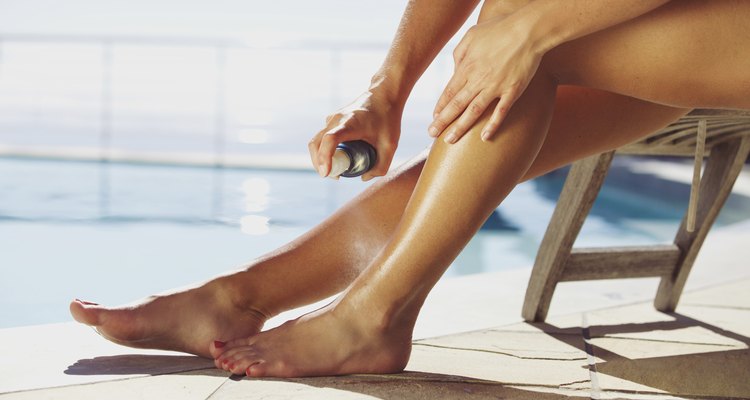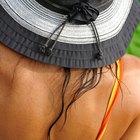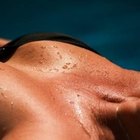
AmmentorpDK/iStock/Getty Images
Spray tanning has become a popular alternative to sunbathing, allowing that attractive summer glow without the risks involved with exposure to the sun's ultraviolet rays. Spray tanning affects scars in different ways, depending upon the age of the scar and its type, diminishing the appearance of some scars and having little affect on others.
How Spray Tanning Works
Spray tanning uses a chemical called dihydroxyacetone, or DHA, to darken the skin tone, simulating a sun tan. DHA works by interacting with dead skin cells on the surface of the skin, which causes them to darken, an effect that generally lasts for several days, gradually fading as dead skin cells slough off. Spray tanning is often done in tanning booths, which are designed to spray an even coat of DHA over the body, or it can be done by a salon technician using a spray compressor, a technique that is called airbrushing. Self-tanning sprays are also available for use in the home.
Stretch Marks
Stretch marks react differently to spray tanning according to age. Sunless.com explains that new stretch marks will not absorb the tanning solution and therefore may become more noticeable, while older ones that have been healed for several years will be disguised. Newer stretch marks will not tan in the sun either, and sun exposure can impair healing.
Acne Scars
Spray tanning may help reduce the appearance of hyperpigmentation scarring, which are red, purple or brown spots left behind as acne lesions heal. However, more severe acne scarring may become more noticeable with self-tanning treatments, so testing in a small, inconspicuous area may be advisable before applying a spray tanning product overall.
Other Types of Scars
As with stretch marks, spray tanning on other types of scars can be unpredictable. Recent scars tend to stay lighter than the surrounding skin when a spray tanning solution is applied, absorbing less DHA. Older scars may absorb DHA more readily, blending in with surrounding skin to become less obvious. Some scars may darken more than the surrounding skin, as can rougher areas such as elbows, knees and knuckles.
Considerations
Exfoliating the skin before spray tanning solutions are applied can help ensure even coloration, smoothing rough areas to prevent dark splotches. Sunless tanning does not protect against the ultraviolet rays of the sun, so you will still need to apply sunscreen for outdoor activities.
Related Articles

UV Tanning Vs. Spray Tanning

How to Make a Spray Tan Last

Pros & Cons of Spray-on Tans

How to Remove Blotches Caused by ...

Review of New-Skin Scar Therapy

How to Tan Faster in a Tanning Bed

What Will Happen If I Shower 3 Hours ...

How to Waterproof a Leather Jacket

Can You Get a Spray Tan After Being ...

Difference Between Body Spray & ...

How to Waterproof Cotton Fabric

How to Get Rid of Tan Lines Before a ...

How to Get a Base Tan in a Tanning Bed

Face Abrasion Treatment

How to Fix a Bad Spray Tan

How to Care for Frye Boots

Difference Between Bronzing & Tanning ...

Spray Tanning Ingredients

How to Get That White Wax Residue Off ...

Dangers of Spray on Tan
References
Writer Bio
Melinda L. Secor left a 20-year career in health care and developmental disabilities to become a full-time freelance writer. In addition to blogging regularly, she writes for numerous websites on a wide range of topics that include politics, finance, homeschooling, parenting, sustainable living/self sufficiency, health, developmental disabilities, gardening and many others.
Photo Credits
AmmentorpDK/iStock/Getty Images